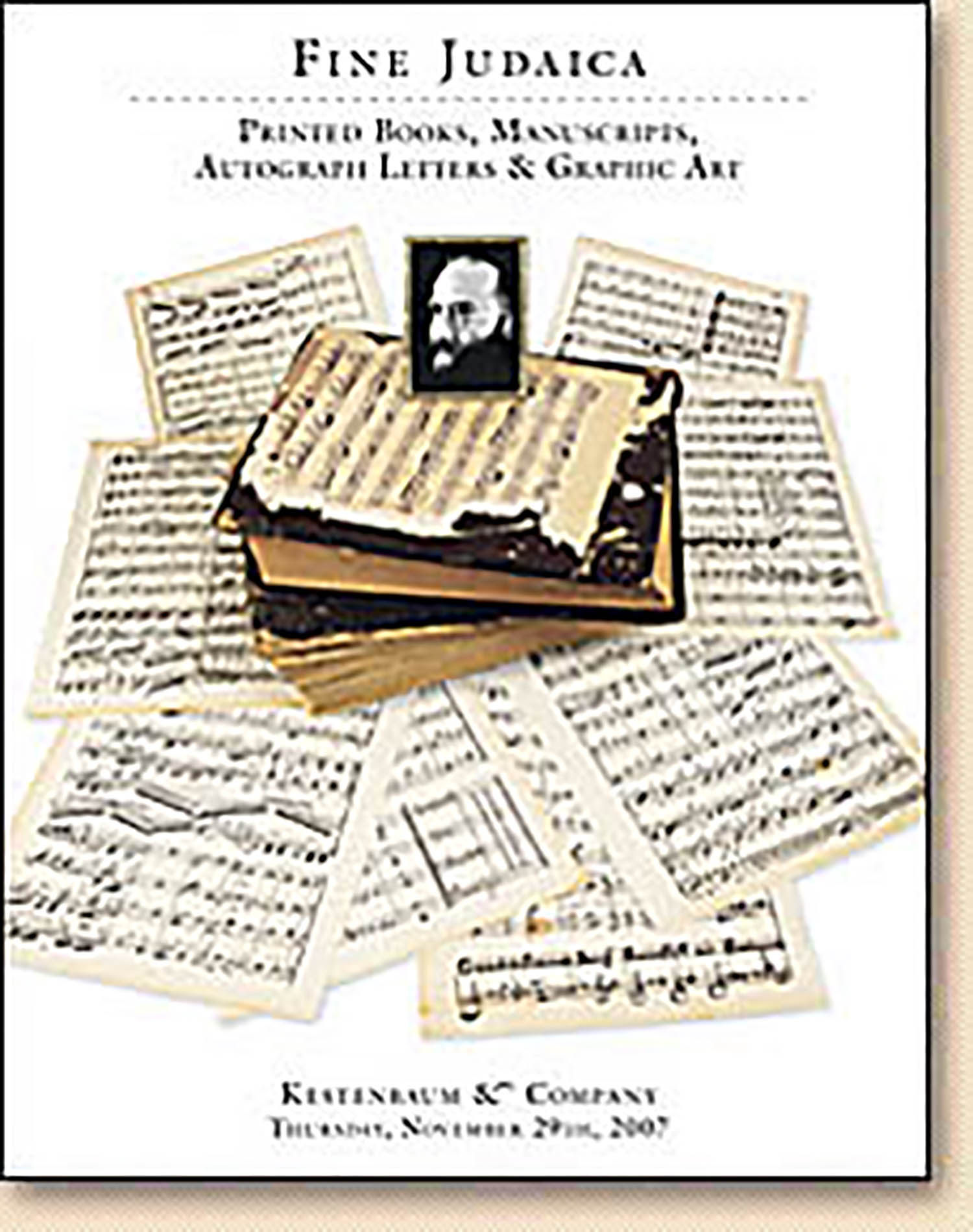Seating Plan of the Beccaria Synagogue with names of occupants of seats

AUCTION 38 |
Thursday, November 29th,
2007 at 1:00
Fine Judaica: Printed Books, Manuscripts, Autograph Letters & Graphic Art
Lot 294
(ITALY)
Seating Plan of the Beccaria Synagogue with names of occupants of seats
Mantua: 1740
Est: $4,000 - $5,000
PRICE REALIZED $4,000
In 1595 Pope Clement VIII permitted the festablishment of a synagogue by the Aschkenazi Jews of Mantua. It became known as "Beccaria" the Italian word for slaughterhouse, which was in proximity to the synagogue. In 1630 the Beccaria Synagogue along with the other Mantuan synagoges was plundered by the Emperor's soldiers, but was subsequently restored. With the demolition of the Mantuan ghetto in the 1920s, the Beccaria Synagogue too was demolished. See S. Simonsohn, History of the Jews in the Duchy of Mantua (1977), pp. 569-571.
Seating arrangements in the synagogue were permanent and inherited, nonetheless, it was not unheard of for controversies to arise regarding these arrangement. One such dispute arose in the year 1739 between Eliezer d'Italia and his son Rafael Chaim d'Italia and the wardens of the Baccaria Synagogue. In a list from that year, 74 householders had permanent places in the Synagogue and 6 householders were without permanent places (see Simonsohn, ibid., n.221). One speculates that that very controversy prompted execution of this magnificent seating chart.
As Simonsohn points out, though officially an Aschkenazic congregation, members of the Beccaria Synagogue included Italian families such as the Norsa and the Portaleone (Sha'ar Aryeh) Families, as well as a few Sephardic families. The Parnas, Asher (Anselmo) Mondovi as well as the nivchar (elected official), Solomon Abraham Jonah were prominent in the banking industry in Mantua (see Simonsohn, pp. 241-2). One notes that a seat between the Duchan (raised platform in center, otherwise referred to as the "almemar" or "bimah") and the "mekom ha-Aron" (the Ark) is reserved for an individual demurely referred to as "Tza'ir ha-Kotev" (the young scribe, i.e. Moses Ephraim Jonah himself
